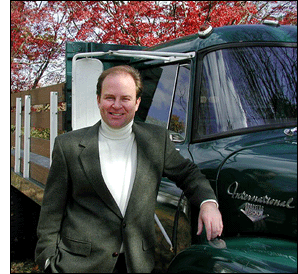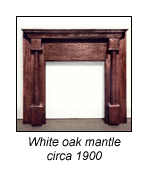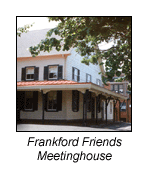 |
|
|
|
|
 |
|
|
 |
|
|
 Jonathan
R. Distel feels twenty years older than he actually is —
mainly because he started his career at the tender age of
6. That was when he received his first set of tools. Not plastic
toys, but real tools in a real toolbox. He took them to the
job sites of his father and grandfather and quickly learned
the skills passed down by the men in his family for five generations,
dating back to Swiss woodcarvers of Brienz. It wasn't long
before he was working alongside the carpenters and developing
his craft, firsthand.
|
 |
|
Throughout his youth, Jon helped his father and grandfather
construct houses in the Chestnut Hill section of Philadelphia
and the Main Line suburbs. He learned time-honored techniques
from a variety
of craftsmen from the deep South, Appalachia, and Europe.
|
 |
|

As a student at Chestnut
Hill Academy, Jon received the Energy Scholars Annual Conference
Award for his work in Solar Energy Studies in 1979. Just four
years later, he and his family built the very first Ecosa
double-envelope solar house in Pennsylvania.
At Drexel University,
Jon earned a Bachelor of Science degree in Finance and International
Economics — a five-year cooperative education program
that he completed in four years, often averaging 24 credits
a term. He was still able to find time for building, restoration,
and working with his family. He even started his own furniture
restoration business and counted University department heads
and professors among his clients.
|
|

After
graduation, Jon put his degree and knowledge of world trade
to use by partnering with a Belgian woodworking company. They
opened offices in Liege, Greenwich, and Philadelphia, and
together custom-designed and built extravagant entrances and
doorways for export to the United States. Jon traveled Western
Europe, researching the history of European entrance styles
to bring new ideas and designs to their company.
After years of success,
Jon decided to redirect his efforts and give something back
to his hometown city of Philadelphia. He assembled a large
crew of workers and
|
 |
|

rehabilitated city row
homes that had been victimized by arson and nearly destroyed.
The work was challenging, but also rewarding. Not only did
he create housing for needy families, he was also able to
rescue architectural
treasures from being ultimately destroyed. Years later,
he would further devote his community-driven spirit to several
Habitat for Humanity projects in Trenton, New Jersey.
Over the years that followed,
Jon further broadened his experience as a Construction Manager
for major construction firms in the Mid-Atlantic region —
working on large-scale institutional, commercial, and residential
projects. At the same time, he continued to work for his own
clients and build his reputation as a master
carpenter and restoration
specialist.
|
|

Since founding Firethorn Incorporated in 1992, Jon has set
the standard for providing high quality craftsmanship and
building services with a uniquely cost-effective approach.
In addition to building, Jon's commitment to research
and consulting has established him as an expert on historical
properties and building practices.
A historical preservationist
and purist at heart, Jon seeks to rescue treasures of the
past as well as build and create valuable works for generations
to come. To date, Jon has restored over a thousand pieces
of furniture and created numerous originals. He has worked
to restore major historical buildings, including the oldest
framed Quaker
Meetinghouse in the country. His devotion to and command
of American and European history fuels his talent. Often times,
just a few shreds of information or shattered pieces of wood
can lead him to the wealth of information his clients seek.
|
 |
|

Jon may have come a long way from that little boy with the
toolbox, but he has amassed a vast amount of experience and
expertise in a comparatively short amount of time. Today,
he carries with him the time-honored skills, driven work ethic,
and tradition a fifth-generation woodworker brings —
along with a modern vision and passion for his life's work.
|
|
|
|
|
|
|
|
|
|
|
|
 |